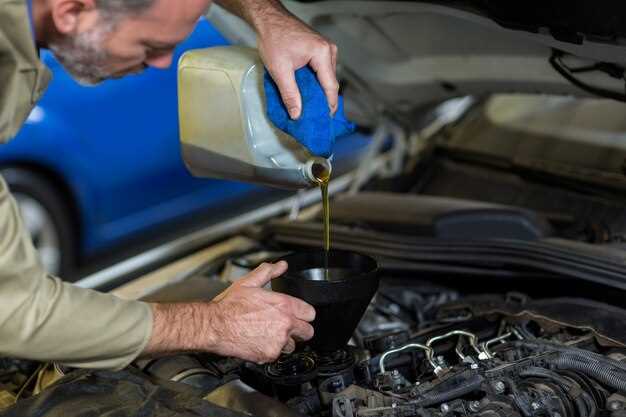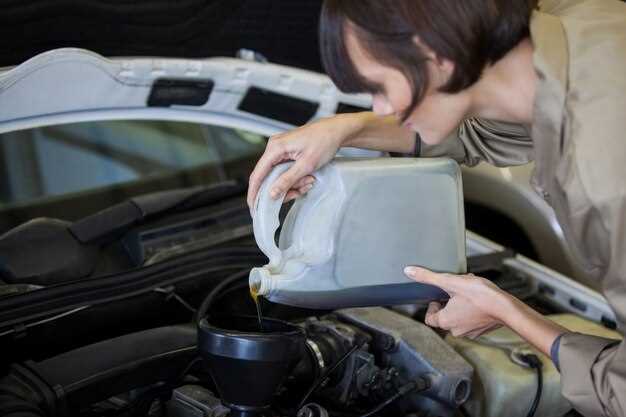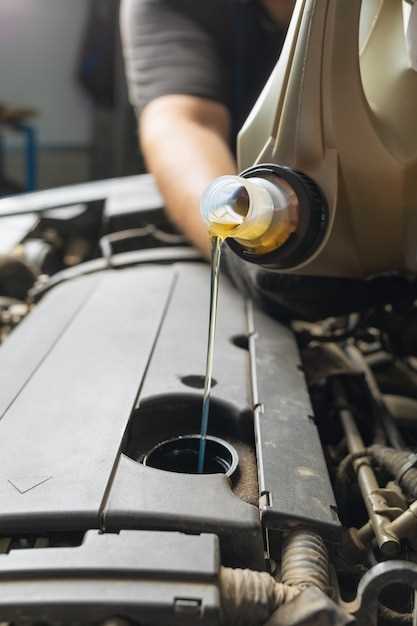How to Stop Oil Leaks in Older Fiat Engines

For car enthusiasts and collectors, vintage Fiat vehicles represent a unique blend of charm and engineering. However, many owners encounter common issues, with oil leaks being one of the most prevalent problems in these classic engines. Understanding how to effectively fix oil leaks in vintage Fiat engines is crucial for maintaining both performance and the overall value of these cherished automobiles.
Oil leaks can occur for various reasons, including worn gaskets, deteriorated seals, and loose fittings. Identifying the source of the leak is the first step in the process. By employing careful observation and thorough inspection techniques, owners can pinpoint the exact location of the leak and determine the most effective fix.
This article will provide a detailed guide to diagnosing and addressing oil leaks in vintage Fiat engines. From understanding the specific components that commonly fail to offering practical advice on repairs and maintenance, readers will find valuable insights that can help keep their Fiat in excellent running condition. Ultimately, resolving oil leaks not only enhances engine performance but also extends the lifespan of these iconic vehicles.
Identifying Common Oil Leak Sources in Classic Fiat Models

Classic Fiat models, while beloved for their design and performance, are often prone to oil leaks due to age and wear. Understanding the common sources of these leaks can aid in effective troubleshooting and maintenance.
One of the primary sources of oil leaks in vintage Fiats is the valve cover gasket. Over time, the gasket can degrade, leading to oil seeping out. A visual inspection may reveal oil pooling around the edges of the valve cover, indicating a need for replacement.
Another frequent culprit is the oil pan gasket. The oil pan seals the oil reservoir, and if this gasket becomes brittle or cracked, it can allow oil to escape. Checking for wet spots or oil stains beneath the vehicle can help pinpoint this issue.
The rear main seal is also a known source of leaks, particularly in older Fiat engines. As this seal ages, it may fail, resulting in oil dripping from the back of the engine and potentially creating a mess on the driveway.
Additionally, oil filter and oil pressure sender units can contribute to leaks. If these components are not properly tightened or if the gaskets are compromised, oil can leak around them, requiring careful inspection and possible replacement.
Finally, examine the engine’s front crankshaft seal. Similar to the rear main seal, wear and tear over the years can cause this seal to fail, resulting in oil leakage. Regularly monitoring for signs of oil around the crankshaft area can help identify issues early.
Identifying these common leak sources in classic Fiat models is essential for maintaining their performance and longevity. Addressing oil leaks promptly not only preserves the integrity of the engine but also enhances the driving experience.
Step-by-Step Guide to Replacing Gaskets and Seals

To effectively fix oil leaks in vintage Fiat engines, replacing gaskets and seals is essential. This guide will walk you through the necessary steps to ensure a successful repair.
First, gather the required tools and materials: a socket set, wrenches, screwdrivers, a gasket scraper, new gaskets and seals, engine oil, and a torque wrench. Make sure you have everything handy before starting the process.
Begin by parking the Fiat on a flat surface and allowing the engine to cool. Disconnect the negative battery terminal to ensure safety during repairs.
Next, identify the source of the leak. Inspect the engine for oil stains and traces, focusing on areas like the valve cover, oil pan, and timing cover. If necessary, clean the area with a degreaser to see where the leak is originating.
Once the leak is identified, remove any components blocking access to the faulty gaskets or seals. This may include air intake components, hoses, or other ancillary parts. Keep track of all bolts and screws by organizing them in containers.
Carefully remove the old gasket or seal using a gasket scraper. Take caution not to damage the mating surfaces of the engine components. Clean the surfaces thoroughly to ensure a proper seal with the new gaskets.
Now, install the new gasket or seal. Ensure it is aligned correctly according to the manufacturer’s specifications. If dealing with a reinforced gasket, apply a light coat of engine oil on both sides for added protection and improved seal.
Reattach any removed components, tightening all bolts to the recommended torque specifications. Do so in a crisscross pattern to ensure even pressure distribution on the gasket.
Finally, reconnect the negative battery terminal and refill the engine oil if needed. Start the engine and allow it to run for a few minutes while monitoring for any signs of leaks. Recheck all connections and listen for unusual noises to ensure everything is functioning correctly.
Following these steps will help you effectively fix leaks in your vintage Fiat, restoring its performance and reliability.
Tools and Techniques for Maintaining Leak-Free Fiat Engines
To effectively fix oil leaks in vintage Fiat engines, it is essential to have the right tools and techniques at your disposal. First and foremost, a comprehensive toolkit should include a socket set, wrenches, screwdrivers, and an oil filter wrench. These basic tools will facilitate the removal and installation of key components, allowing access to the areas where leaks commonly occur.
Before starting repairs, it is important to clean the engine thoroughly, removing any build-up of grime and old oil. This not only helps identify the source of the leak but also ensures a better seal when reassembling components. Use a degreaser and a soft brush to clean hard-to-reach areas, then rinse with water and dry thoroughly.
For fixing leaks, specialized sealants and gaskets designed for vintage engines are crucial. When replacing gaskets, ensure that the surfaces are smooth and free from debris. A gasket maker can be used as an additional measure to enhance sealing where needed. Pay attention to common leak points such as the oil pan, valve cover, and oil filter.
Regular maintenance practices can prevent leaks from developing in the first place. Conduct frequent oil level checks and change the oil at recommended intervals. Periodically inspect hoses and fittings for signs of wear or damage. Tightening bolts to the correct torque specifications can also help maintain a leak-free environment, as over-tightening may lead to further issues.
Finally, utilizing a pressure testing method can be effective for locating hidden leaks. Professional-grade pressure testers can reveal if there are any weaknesses in the engine seals, helping to pinpoint problem areas before they can cause significant damage. Overall, combining proper tools with diligent maintenance techniques is essential for preserving the integrity of vintage Fiat engines and ensuring they operate leak-free.



